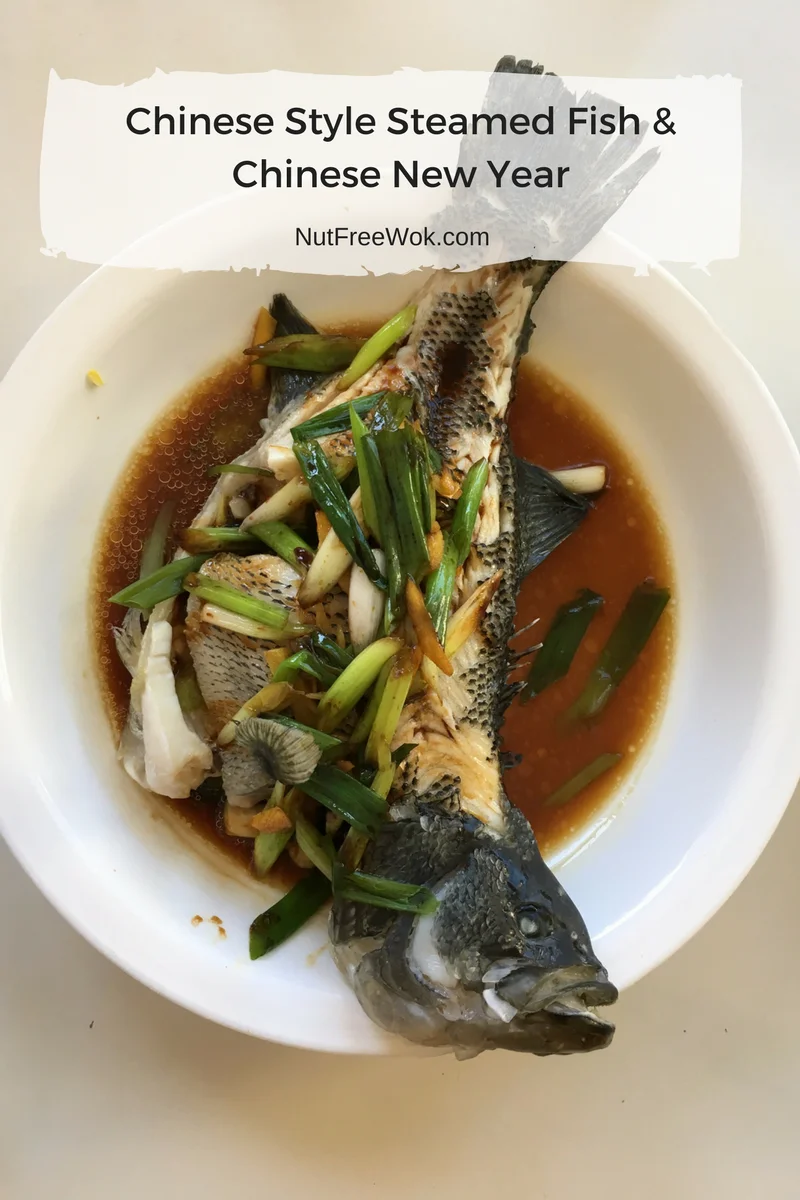
A Chinese style steamed fish can be enjoyed anytime of the year. It’s an especially auspicious dish to serve during Chinese New Year (aka Lunar New Year) which is coming up soon on January 29, 2025.
Disclaimer: Please check that all ingredients are suitable for your allergies and be sure to ask your medical care team regarding any allergy related questions (I do not share medical advice). As an Amazon Associate, I earn from qualifying purchases.
Happy New Year and Happy Chinese New Year!
I hope that you had a restful, safe, and happy holiday season with your friends and loved ones. Some of my ongoing (basically forever) resolutions are to be healthy, be at a healthy weight, and eat well. A Chinese-style steamed fish is one of our family’s favorite dishes to help us eat healthy and enjoy great food.
A Chinese style steamed fish is considered an auspicious dish to celebrate Chinese New Year. Fish symbolizes wealth and prosperity. It’s traditional to cook and serve the whole fish intact (with the head and tail too) for new year celebrations. I personally leave them on everytime (less work, more flavor).
Buying Fresh Fish
Freshness is key.
Chinese style steamed fish is sublime when the fish is very fresh. It’s fresh if the fish was swimming hours before in an Asian supermarket or in an ocean, lake, or river.
If you don’t have access to live fish, here are some tips to select a fresh fish
- look for a fish that looks clean, fresh and firm
- check that it doesn’t smell fishy or has a strong odor
- inspect the eyes, which should be bright, clear, with a slight bulge (not cloudy around the pupils)
- peek behind the head to see if the gills are bright red
- if the fish is already gutted, look inside the abdomen area and avoid if the belly has a yellow stain
Whole or filet?
If you want to steam fish as part of a regular meal, you can serve whole fish or a filet as long as it’s fresh. But if you are serving steamed fish for a traditional Chinese New Year meal, it’s traditional to serve a whole fish.
I have a personal preference for serving a whole fish with only one cut along the belly where it’s gutted. I don’t like cutting off the tail or the head or cutting a larger fish in half to fit my plate because I think some of the flavor and juices leak out at the cuts.
Size matters
If you have a fresh whole fish, a 1.25 to 1.5 pounds size fish is ideal. A smaller fish might not be enough for 4 people and you’ll just be sorting through a lot of tiny bones. If it’s too big, then it’s difficult to cook evenly.
Which type of fish?
My favorite fresh fish that is available locally is called “mang cho” in Cantonese or largemouth black bass. It’s very tender, easy to debone, and has a lot of flavor without being fishy.
I also like petrale sole because there are very few hidden bones other than the large spine and little bones along the back and fins. If you decide to try petrale sole, ask the fish monger to discard the head, do not cook it.
My mom likes yellow croaker, which I haven’t tried. Tilapia is also a popular option. However, it doesn’t agree with me so I avoid.
Preparing Fish
My family used to go fishing for fun and I’ve had to gut fish a few times in my life. It’s messy and not so easy to do. Be careful not to pierce any belly organs! One of the organs releases a bitter yellow bile that affects the taste of fish around the belly. If you can’t avoid it, rinse the fish out as best as you can, note which area is stained, and don’t serve that bite.
Use your fingers to remove any bits of guts and organs under running water. Check the head and remove any remains of the gills (twist it off or use sharp kitchen scissors). Use a paring knife and carefully scrape the skin to remove any scales and slime on the skin.
Rinse the fish again, drain in a colander or plate for a few minutes, pat dry with paper towels, and place in a pie plate (or something similar). Let it rest some more and pat dry again before adding ginger and scallions.
Set up a Steamer
I’ve recently written an indepth post on how to steam Chinese recipes. One of the reasons I recommend a smaller fish is that you need to fit it in a serving dish such as a pie plate. A pie plate will fit inside most 6-8 qt stock pots or large lidded frying pans. Allow a little bit of clearance around the sides so that you have room to lower fish into a hot steamy pot and take the finished dishe out safely when the fish is ready to serve.
You will also need a steamer rack or sauce to elevate the pie plate above the water level and have enough clearance for the rack, the dish, and the fish with the lid in place. I recommend that you check that your dish fits in the pot and that there’s enough clearance for the steam to circulate when the lid is on before you start cooking.
How to Steam, Serve, and Politely Eat Steamed Fish
Once the water in the steamer is at a rolling boil, I add the fish and cover the pot immediately with the lid. Fish is very delicate and time-sensitive so set a timer. I try to buy a fish that is around 1.25 pounds and steam it for about 8 minutes, 7 minutes if the fish is closer to 1 pound and 9-10 minutes if the fish is closer to 1.5 pounds. Add an extra minute if you take your previously prepared fish right out of the refrigerator.
It’s important to serve the fish immediately after it’s cooked for optimal texture and temperature. I carefully use a serving spoon to tease apart large pieces of fish without scooping the little bones along the fins and spine and drizzle a little bit of the sauce and serve a tiny amount of green onions and ginger with each morsel.
It is considered extremely bad manners and bad luck to flip the fish over to serve the other side, instead one is supposed to lift the spine and set it aside and continue serving.
If anyone remembers watching the movie adaptation of Amy Tan’s Joy Luck Club, during the meet parents scene Waverly’s mom modestly says that her fish might not have a lot of flavor and Waverly’s boyfriend helpfully drenches the fish in soy sauce and every gasps and looks aghast because steamed fish is supposed to be delicately seasoned and it’s not appropriate to drench it with additional soy sauce.
“How Do You Celebrate Chinese New Year?”
One of my friends shared that she was going to buy Chinese food from a take out place at the mall to celebrate Chinese New Year and then asked me how do you celebrate Chinese New Year? I was quite impressed that she wanted to celebrate Chinese New Year and interested in how I celebrate. I might have mentioned having dim sum with family. But I had pangs of guilt about how we celebrate Chinese New Year.
I do not do all of the traditional things in my home. I don’t always clean the house before the new year nor remember to place tangerines and money-filled lucky red envelopes in every room. It’s also customary to bring sweets and oranges to relatives’ houses. And I forget to prepare red envelopes of money to give to every child or single person I meet. Those omissions are my lazy choices but the core issue was that our family was greatly limited by food allergies.
We couldn’t join in any extended family celebrations. It’s traditional to have a tray of snacks containing nuts, candied fruits, and candies. Many dishes contain nuts and at the time, my son was reacting to airborne nuts. I love my aunts’ and grandmother’s cooking but there was very little that my son could eat. I couldn’t cook an allergy safe Chinese New Year feast let alone expect anyone else to do so.
A Chinese New Year Feast, One Dish at a Time
My friend’s innocent and friendly question made me think! I wanted to master a new allergy aware Chinese New Year dish every year. Eventually I will be able to cook up a feast. Here are some other great nut-free recipes to make as a part of a Chinese New Year celebration, which I have compiled in Best Lunar New Year Recipes For Your Celebrations with some Korean and Filipino new year recipes too:
Small Bites and Sweets for Chinese New Year
- Chinese New Year Cake “Nian Gao” – top 9 allergen free dessert made from rice, sugar, and water.
- Chinese Pork and Cabbage Potstickers – a traditional filling with store bought wrappers, great for feeding a crowd
- Turnip Cake, a dim sum favorite – free of 8 out of the 9 top allergens, easy adapted to be top 9 free
- Make Chicken Potstickers from Scratch – chicken filling with home made wrappers, you can mix and match the fillings and wrappers.
- Pan-Fried Pork and Shrimp Dumplings (Potstickers) – pork and shrimp filling with a homemade wrapper and a how to video.
- Delicious Red Bean Black Glutinous Rice Soup Recipe – delicious dessert soup made with red beans
Main Dishes for Chinese New Year
- Asian Chicken Lettuce Wraps with Hoisin Sauce (Nut-Free)
- Make Beautiful Lettuce Cups – a how to guide to make lettuce cups
- Stir Fried Iceberg Lettuce with Oyster Sauce – what to do with all the extra lettuce
- Wagyu Lettuce Wraps (you can substitute wagyu sausage with any other cooked meat) – fill the lettuce cups with something delicious
- Chinese White Chicken “Bok Cheet Gai” made in a slow cooker – a traditional dish but made with a modern convenience. If you want to be really authentic use a whole chicken with the head and feet attached.
- Cantonese-Style Poached Chicken Recipe – learn how to poach a whole chicken so that it’s perfectly cooked and juicy.
- Rice Ovalettes with Pork and Vegetable Stir Fry “Chao Nian Gao” – this is a stir fry dish that is a complete meal
- Sharon’s Special Sticky Rice – this is not specifically Chinese New Year related, but is a delicious and popular side
- Steamed whole fish, you can use this recipe with most fishes that are big enough for your family but also small enough to steam inside your pots.
Fortunately most people can enjoy oranges, mandarins, and tangerines which are free of top allergens and in season.
Chinese Style Steamed Fish Recipe
This recipe is free of peanuts, tree nuts, shellfish, egg, and dairy as written. Some readers have commented that they avoid eating fish due to their shellfish allergy. Fish allergies and shellfish allergies are different, please discuss with your medical care team if you have concerns. You can adapt this recipe to be soy-free by leaving out the soy sauce and/or using a soy-free soy sauce.
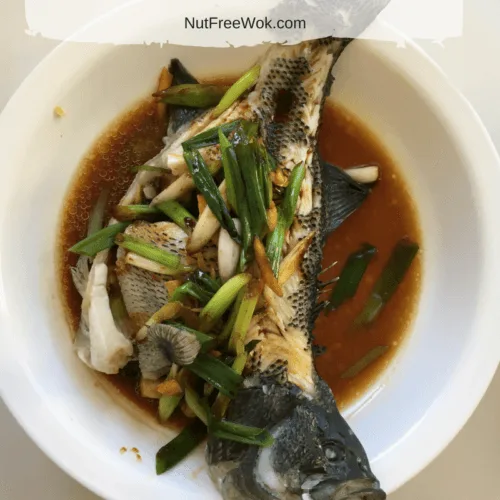
Chinese Style Steamed Fish with Ginger and Scallions
Ingredients
- 1.25 pound big mouth bass or similar fish
- 2 scallions trimmed and julienned
- 1 inch piece of ginger peeled, smashed, and sliced
- 2 teaspoons olive oil
- 1 tablespoon soy sauce
Instructions
- Clean fish and pat dry with a paper towel, set aside in a 9 inch pie plate.
- Set up steamer at medium high heat.
- When the water starts to boil, pat the fish dry again with paper towels and put half of the scallion and ginger on the fish and some in the abdominal cavity.
- Place the fish in the steamer and steam for 8 minutes (7 minutes if the fish is closer to 1 pound and 9 minutes if the fish is closer to 1.5 pounds.
- Meanwhile, heat a small frying pan on medium heat and when it’s hot add the oil and the rest of the scallions and ginger and sautee until fragrant (1 minute), set aside if the fish is not done steaming.
- Transfer the scallion, ginger, and oil mixture onto the steamed fish and drizzle the fish with soy sauce, serve immediately.
Related Recipes That You Might Enjoy
Do you like fish recipes? I often buy salmon from Trader Joe’s and either steam salmon with black bean sauce or bake salmon with teriyaki sauce.
My latest favorite fish to cook and eat is pan seared Greenland halibut which is so tender and more sustainable than similar fish.
Thanks for reading, please help Nut Free Wok!
If you like this post or recipe, please be sure to give a 5 star rating, leave a comment, and share this post! Your support means a lot to me.
Subscribe to Nut Free Wok’s email subscription (be sure to respond to the confirmation email). You will be notified by email next time I publish another post or recipe and I won’t send you spam or share your email address with anyone.
Disclosure/Disclaimer:
I may mention the names of stores and/or brand names of products that I use because readers ask and I share products and sources which I use and think may be helpful to readers, all opinions are my own. Please note that manufacturing practices and ingredients can change at anytime without notice and readers are always responsible for assuring allergen safety before buying or consuming foods. NutFreeWok.com is a participant in the Amazon Services LLC Associates Program, an affiliate advertising program designed to provide a means for sites to earn advertising fees by advertising and linking to Amazon.com. Thank you for reading!

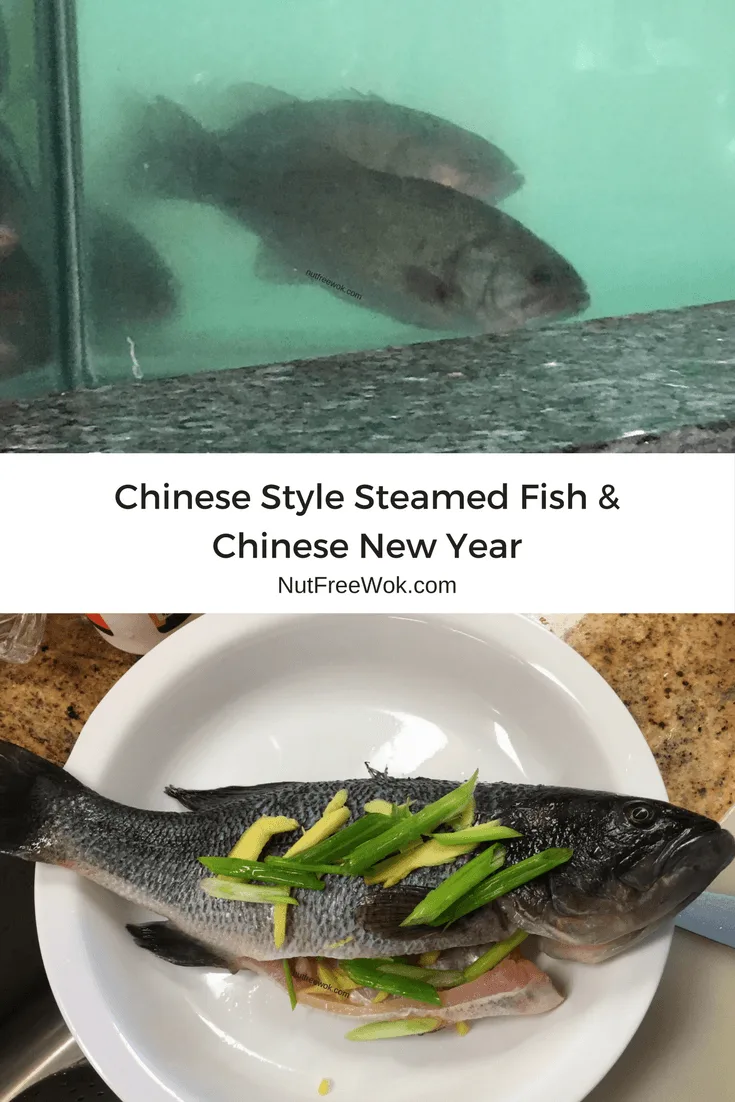


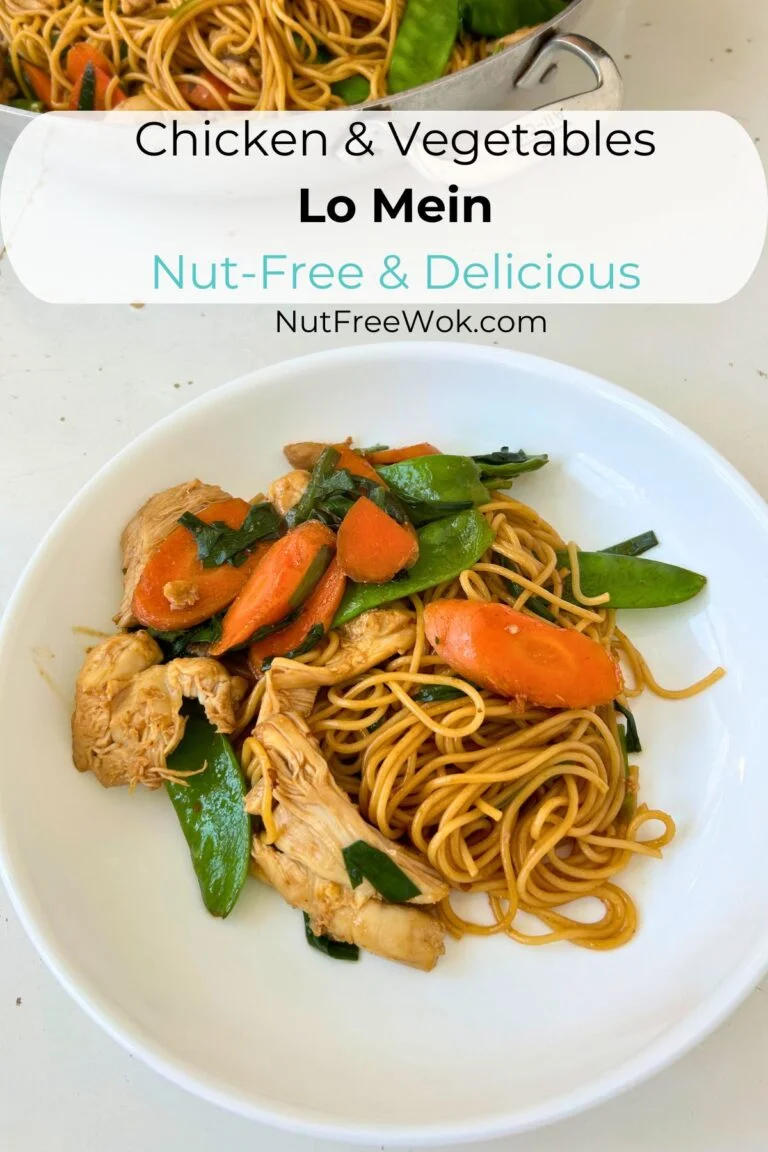

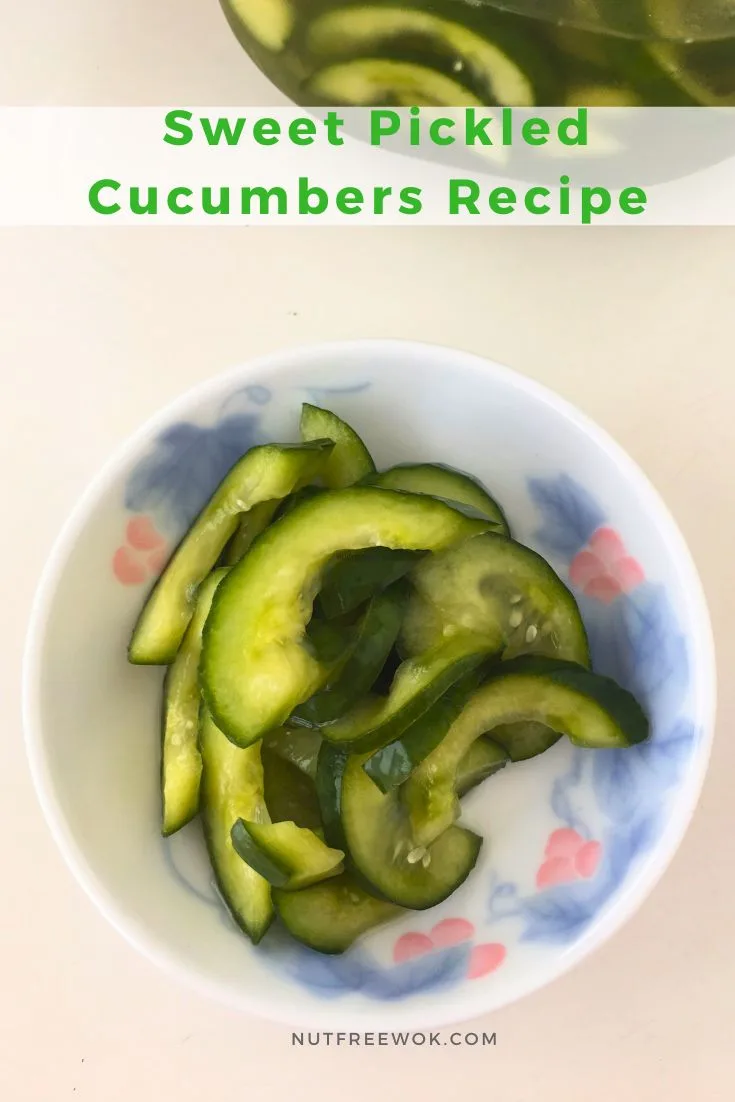
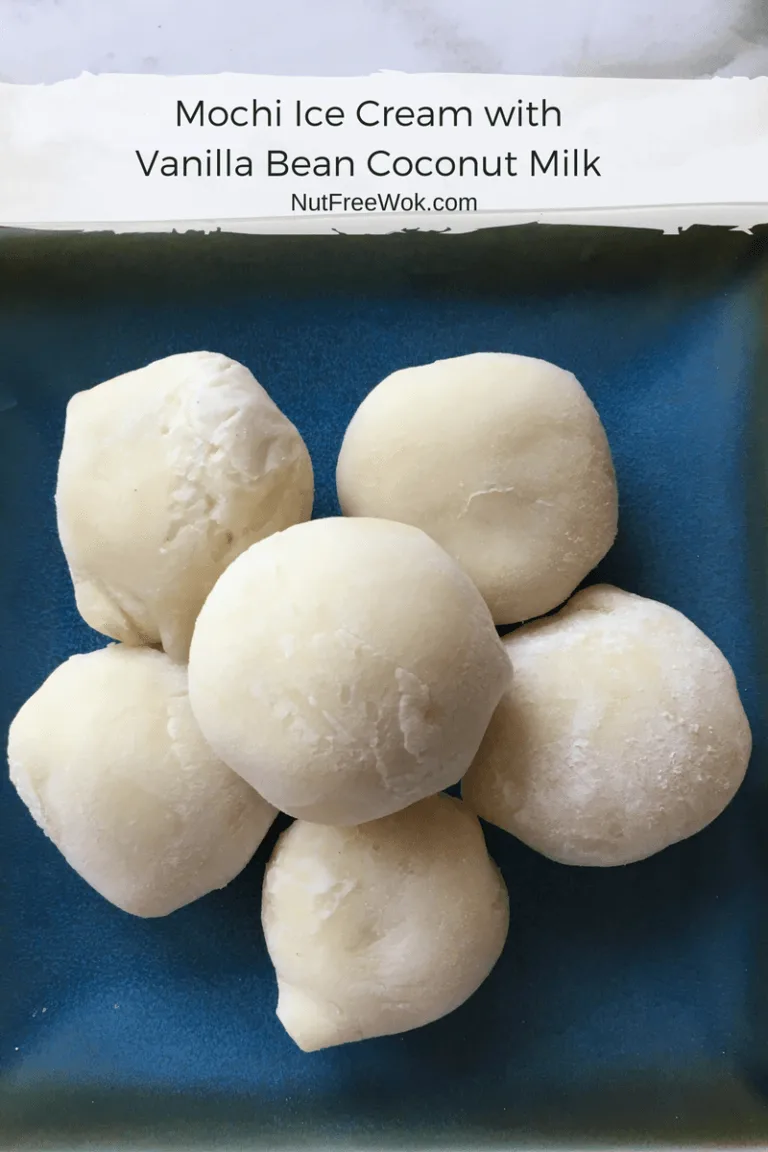
I’ve been looking for what mang cho is! Grandma makes it and we couldn’t figure it out. Thank you!!!!!!
Yes!! Somethings just don’t translate so well. Glad to help!!!
Hi I’m trying to figure out what the English name of Mang Chao is. I see you have it in the photo but that’s definitely not a large mouth bass. I read somewhere else it might be barramundi?
The tank at my local Asian store has a “large mouth bass” sign in front of it. If you figure out a different English or species name of mang chao, please let me know. I looked up barramundi and they look a lot larger than mang chao, which is between 1 to 1.5 pounds at the supermarket. Thanks!
OH man! I remember having a whole one of these when I was in Taiwan 2 years ago!!! SO SO SO good!
Isn’t fresh steamed fish amazing? Now you can make it yourself at home without going to Taiwan, enjoy!